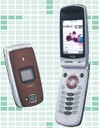
Over the last few days, I’ve had an interesting discussion with Denis of Wapreview on mobile phone experiences during his recent trip to Japan. There are a number of very interesting links in the blog entry as well, including one to download the English manual of the NEC N902i, which seems to be a quite popular phone in Japan. I had a look through the manual to see what kind of functionality it offers that I haven’t seen so far on phones in Europe or in the U.S. and found a number of quite interesting features.
Camera with stabilization: The built in 4 mega pixel camera has an auto focus, digital (only) zoom, and a stabilization/anti shake feature.
Lock phone: In case your phone gets stolen you can lock the phone from a payphone or any other phone. This is done by calling the phone a certain number of times within a certain time frame. I wonder why I haven’t seen this one before, it’s so simple to implement. Does NEC hold a patent on this one and it’s unaffordable to license it?
Bar Code Reader: A hot topic in the blogsphere. It looks like in Japan this is already used very much in everyday life. Bar codes (one and two dimensional) are scanned with the camera and can contain contact addresses and phone numbers to be put into the phone book, eMail addresses and URLs that can be bookmarked or used to go directly to a page. Wap review mentions that these bar codes are at many places in Japan these days, including posters and business cards. I wonder how long it takes for this to become popular in Europe and elsewhere!? A typical critical mass problem.
Remote Monitoring: Incoming video calls from pre-programmed numbers can be accepted automatically (auto answer).
Change between Voice and Video Call: A call can be started as a
voice call and upgraded to a video call later on (by the calling party
only). An interesting feature, I don’t think other UMTS networks and
phones support this today!?
Mobile Wallet (FeliCa): A chip on the back of the phone can be used for contact less micro payment, e.g. for train tickets. The chip also communicates with the phone where an application can used to see transaction / current balance, etc. The chip can also be used to receive text information like for example phone book entries or coupons in conjunction with the application on the mobile phone.
Text Scanner: The camera can be used to make pictures of business cards, URLs, mail addresses and free memos. Once the picture is taken the phone scans the picture and extracts the information for the phone book, the browser etc. Cool for business cards without a 2 dimensional bar code 🙂
Speech output of Text: The phone can read eMails to the user (I wonder how that sounds like)
So Nokia’s, Motorola’s and Sony-Ericsson’s of this world, it’s time to play catch up ! (and to open your pockets for license payments?)